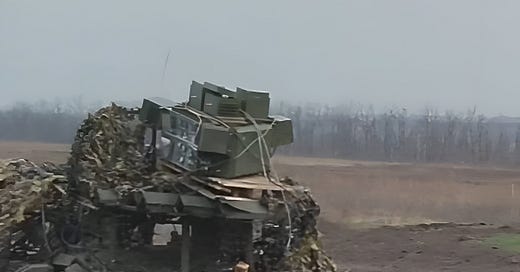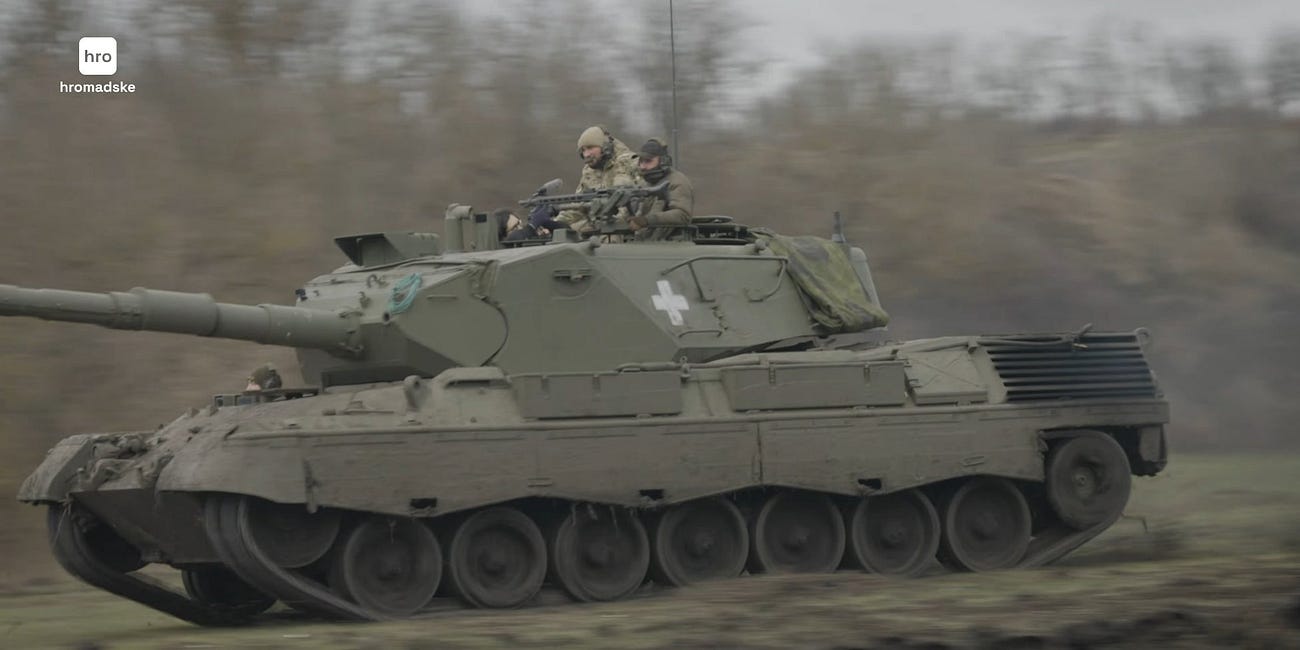A Russian Tank Crew Added Every Imaginable Jammer to Its T-72. A Ukrainian Drone Blew It Up, Anyway.
Russian electronic-warfare gear tends to be badly-made.
Desperate to protect their T-72 tank from Ukrainian drones, one Russian crew piled atop their 52-ton tank practically every single drone-countermeasure available to Russian troops. A radio-jammer with multiple antennae plus a generator and battery.
It was a “terrible construction,” according to the Ukrainian Two Majors channel.
And it didn’t work. A drone blew up the tank, anyway.
The Russians’ maximalist—one might say “farcical”—electronic-warfare effort speaks to Russian forces’ wider problem as Russia’s wider war on Ukraine grinds into its third year.
A network of small workshops across Ukraine is churning out 100,000 explosive first-person-view drones a month. Each two-pound drone can damage a tank out to a range of several miles. A careful hit on the tank’s ammunition-stowage might trigger a catastrophic explosion.
The swarm of Ukrainian FPVs helps to explain why Russian vehicle losses have spiked in recent months—to more than 400. That’s double the loss-rate from September.
The context is important. The Russians have FPVs, too, but they’re less reliable than Ukrainian FPVs are—and also more vulnerable to jamming. And Ukraine’s mass-production of small drones is, in fact, a last-ditch effort to compensate for the abrupt end of U.S. aid to Ukraine after Russia-aligned Republicans gained narrow control of the U.S. House of Representatives and blocked funding.
None of this matters to the three-person crew of a T-72 tank, however. What matters to the tankers is surviving.
So this one crew installed, on top of its tank’s roof-like anti-drone armor, three panels with antennae in the 800- and 900-megahertz and 2.4- and 5.8-gigahertz ranges plus three additional panels with 700-megahertz-to-1-gigahertz antennae. To power this festoon of radio noise-makers, the crew also installed a generator and a battery.
Two Majors called the tank an “E.W. monster.”
But it all was for nothing. Undeterred and unjammed, a Ukrainian FPV struck and destroyed the T-72.
Ukrainian analysis group Frontelligence Insight anticipated the Russians’ electronic-warfare failure. “Despite claims of Russian E.W. efficiency, anecdotal evidence from Ukrainian UAV drone pilots suggests that much of the provided E.W. machinery lacks adequate protection for Russian ground units,” Frontelligence explained.
Part of the problem is the quality of the Russian equipment. Components often are badly-made and badly-positioned inside the jamming unit. “It doesn't work at all,” one Russian blogger complained about the new Volnorez jammer.
It doesn’t matter how many antennae a jammer has if the basic components don’t work singly or as a whole. In that sense, all the E.W. equipment that ill-fated tank crew added to its T-72 amounted to little more than a perverse fashion statement.
Read more:
Where In the Hell Are Ukraine's Leopard 1A5 Tanks?
Starting way back in February 2023, Denmark, Germany and The Netherlands announced they jointly would donate to Ukraine at least 195 Leopard 1A5 tanks. The German-made, 1980s-vintage Leopard 1A5 isn’t a bad tank. It’s got precise day-night optics and a stabilized 105-millimeter main gun. Weighing just 40 tons, th…






